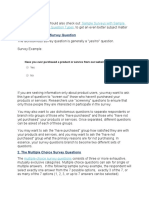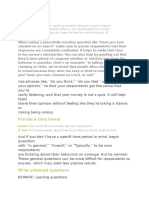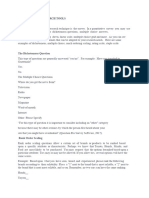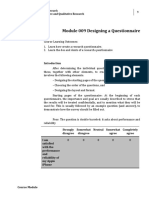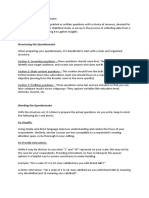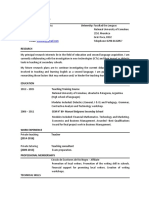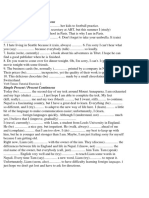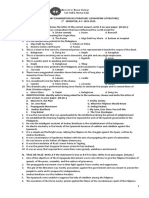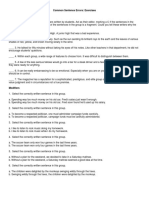0% found this document useful (0 votes)
474 views9 pagesOpen-Ended Questions: Here Are The Types of Survey Questions You Should Be Using To Get More Survey Responses
The document discusses different types of survey questions that can be used to get more survey responses. It describes open-ended questions, closed-ended questions, rating questions, Likert scale questions, multiple choice questions, picture choice questions, and demographic questions. For each question type, it provides examples of questions and discusses when each type would be appropriate to use. It also provides more details on common demographic questions like gender, age, ethnicity, location, education, marital status, and others.
Uploaded by
Mahaputra ST, MT, MBACopyright
© © All Rights Reserved
We take content rights seriously. If you suspect this is your content, claim it here.
Available Formats
Download as DOCX, PDF, TXT or read online on Scribd
0% found this document useful (0 votes)
474 views9 pagesOpen-Ended Questions: Here Are The Types of Survey Questions You Should Be Using To Get More Survey Responses
The document discusses different types of survey questions that can be used to get more survey responses. It describes open-ended questions, closed-ended questions, rating questions, Likert scale questions, multiple choice questions, picture choice questions, and demographic questions. For each question type, it provides examples of questions and discusses when each type would be appropriate to use. It also provides more details on common demographic questions like gender, age, ethnicity, location, education, marital status, and others.
Uploaded by
Mahaputra ST, MT, MBACopyright
© © All Rights Reserved
We take content rights seriously. If you suspect this is your content, claim it here.
Available Formats
Download as DOCX, PDF, TXT or read online on Scribd
/ 9




